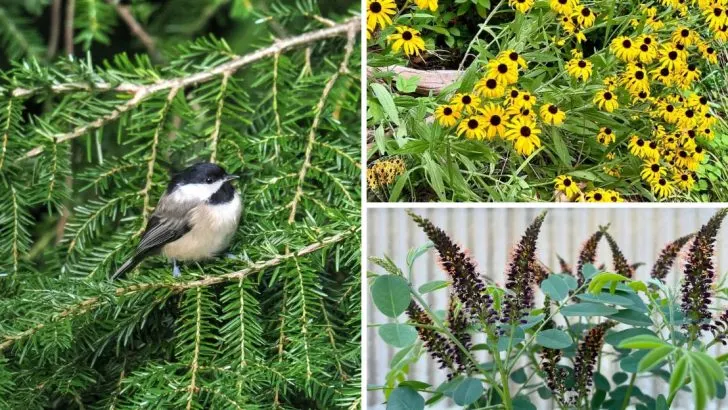If you want more birds in your backyard, start with the right plants. Forget expensive feeders—native plants provide natural food, shelter, and nesting spots that keep birds coming back year after year.
Berries, seeds, nectar—different plants attract different birds, from hummingbirds to finches to cardinals. Some offer safe hiding places, while others invite pollinators that make your yard even more alive.
The best part? Native plants take care of themselves. They’re built for your climate, meaning less watering, less maintenance, and more time enjoying the birds they bring.
Here are 20 native plants that turn any backyard into a bird-friendly paradise.
Eastern Red Cedar
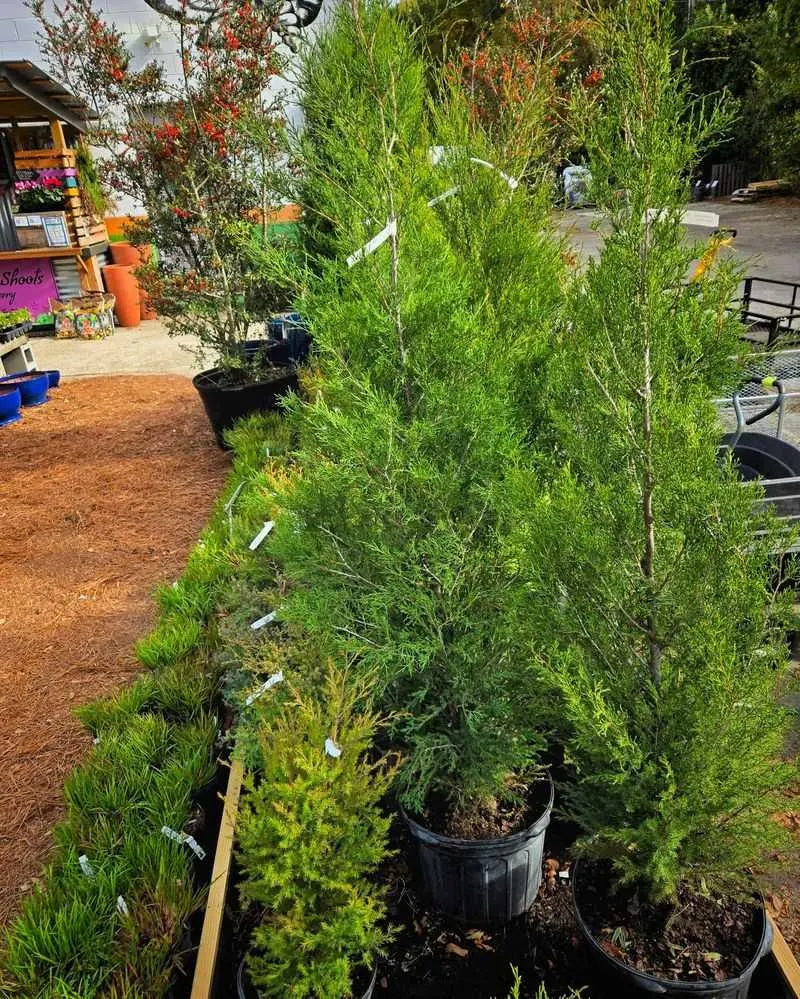
The Eastern Red Cedar doesn’t just grow—it commands the landscape with its evergreen majesty. Its dense foliage serves as a haven for birds seeking refuge from winter’s bite. When the world freezes, the cedar’s berry-like cones are a banquet for hungry beaks, attracting myriad bird species.
In Native American traditions, this tree is sacred, a symbol of protection and purification. Its branches cradle nests with gentle strength, while its scent is a whisper of ancient forests, inviting birds to stay. In your backyard, it stands tall, a guardian and provider, luring winged visitors with its timeless allure.
Serviceberry
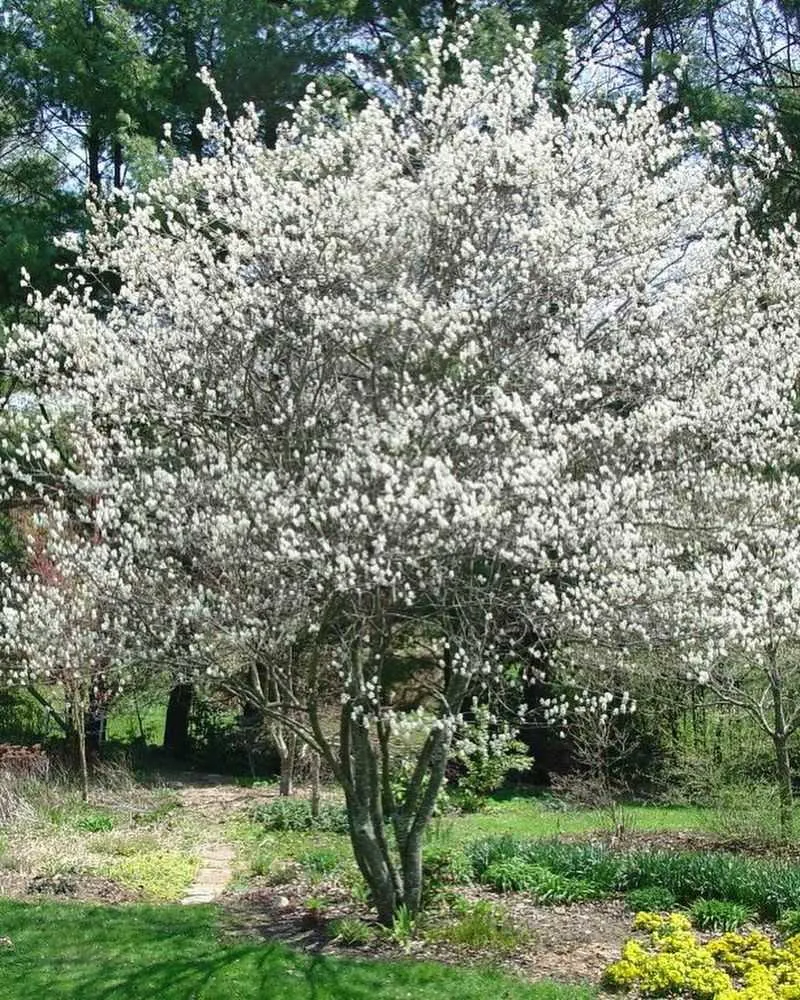
Serviceberry explodes into spring with a riot of white blooms, each petal a star in nature’s constellation. When the blossoms fade, they give way to luscious berries—a feast for the eyes and a treat for the palate of robins, thrushes, and waxwings.
This plant isn’t just a visual delight; it’s a cornerstone in local ecosystems, providing both food and shelter. Its branches, alive with chirps and fluttering wings, are a testament to its allure. In folklore, it’s a harbinger of spring, a tree that whispers of renewal and life’s endless cycle.
Black-Eyed Susan
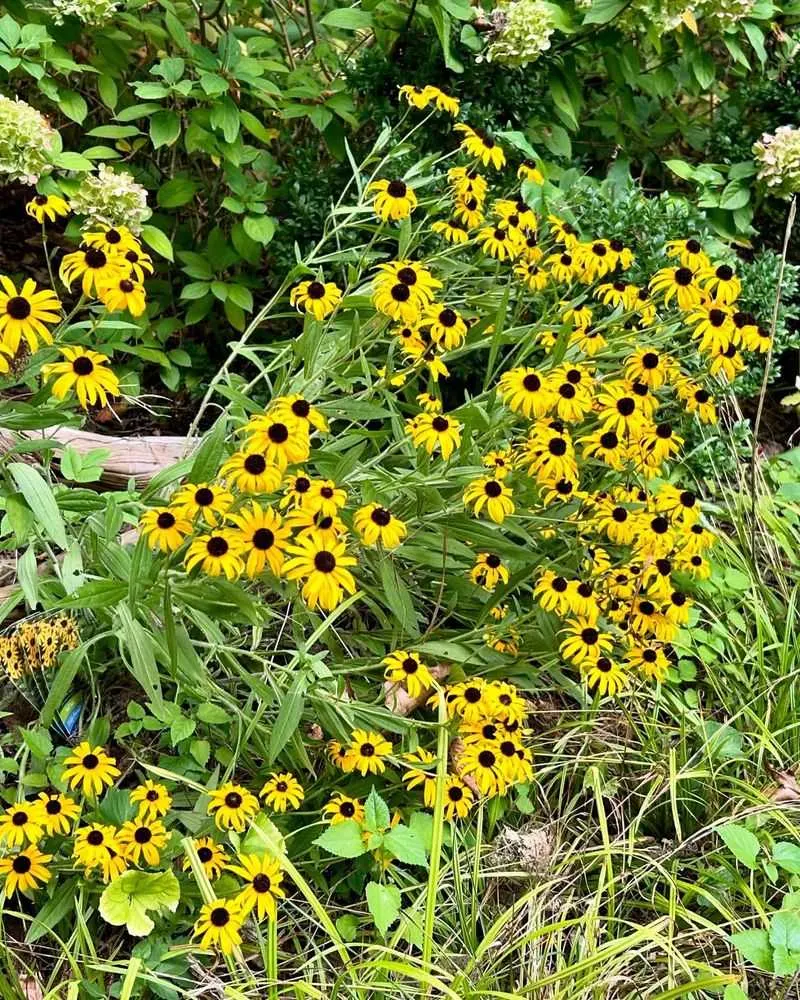
Black-Eyed Susans don’t just brighten landscapes—they electrify them. With golden petals radiating like sunbursts, they draw in pollinators and seed-loving birds alike. Each bloom is a tiny sun, warming the soul and inviting nature’s chorus.
Birds flock to these flowers, indulging in the seeds like tiny treasures. It’s not just a plant; it’s a festival of life, where every creature plays a part. In your garden, they stand as cheerful sentinels, their cheerful faces a beacon for joy and avian visitors.
Elderberry
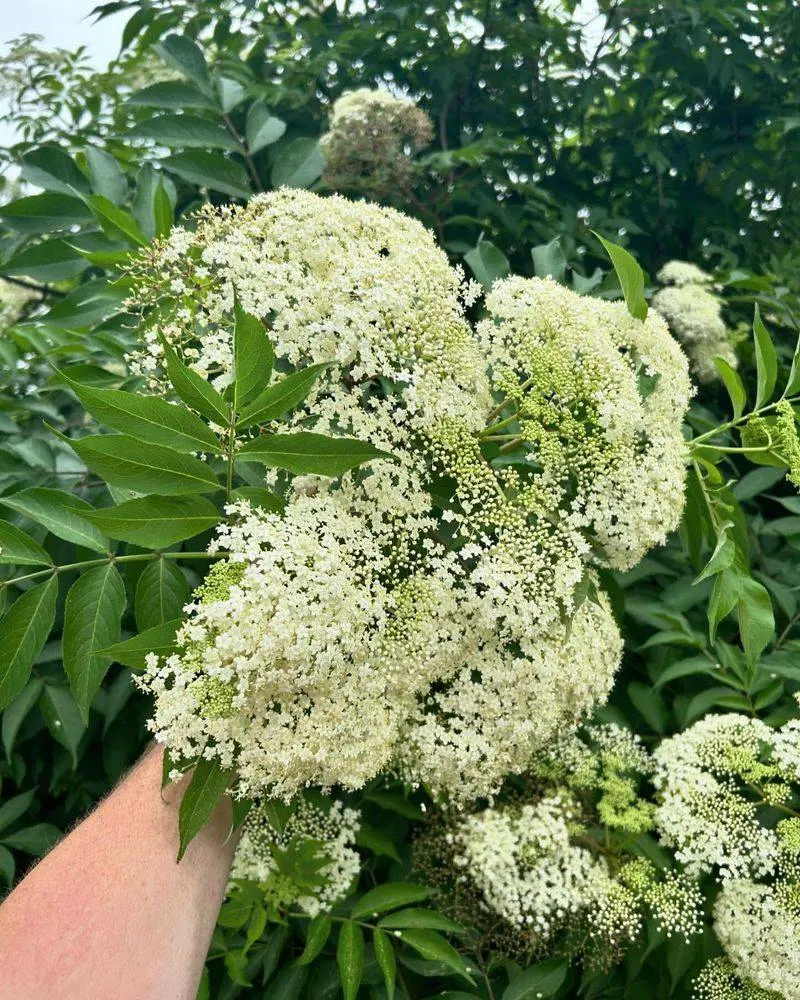
Elderberry doesn’t just grow—it flourishes, bursting with clusters of creamy flowers that transform into rich, dark berries. These berries are magnets for birds, a delicious bounty that promises nourishment and delight.
The elderberry bush isn’t just a food source; it’s a living legend, steeped in folklore and admired for its medicinal properties. Birds flock to it, drawn by the abundance and the promise of sustenance. In your garden, it becomes a hub of avian activity, its branches alive with fluttering wings and joyful chirps.
Cardinal Flower
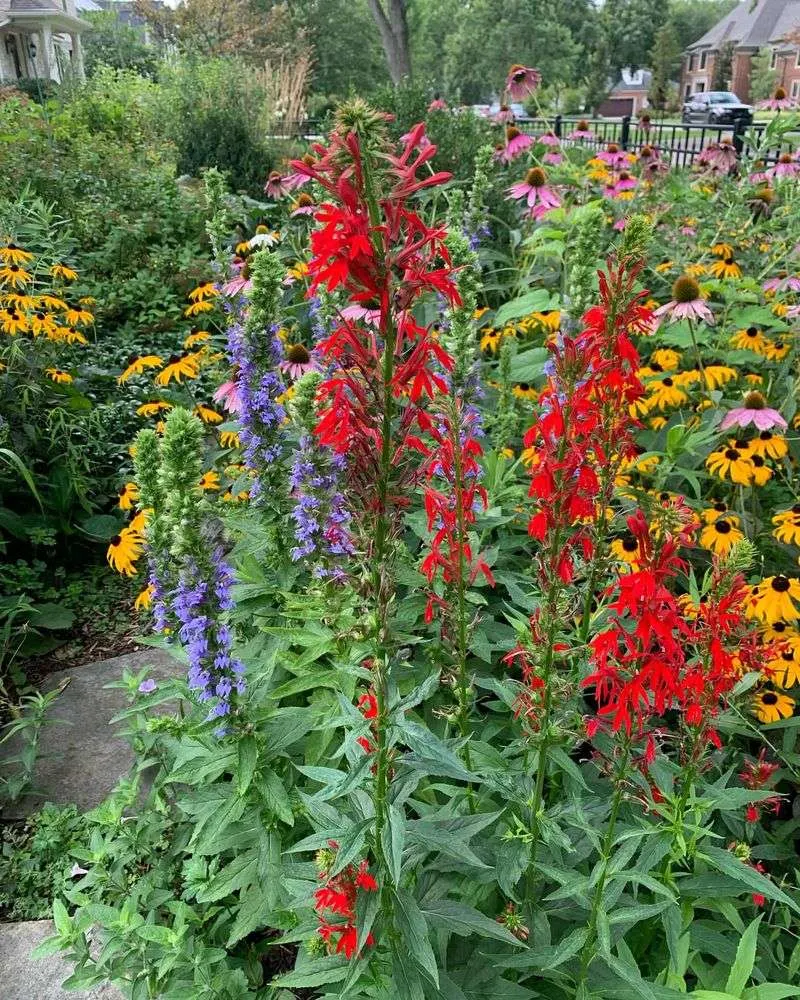
Cardinal Flower doesn’t just bloom—it blazes a trail of fiery red through wetlands and gardens. Its striking color is a siren call to hummingbirds, who can’t resist the sweet nectar hidden within each tubular blossom.
This plant is not just eye-catching; it’s vital for pollinators, a beacon of sustenance. Each flower stand tall, a flame in the green sea of leaves, promising life. In folklore, it’s a symbol of passion and vibrancy, ensuring your garden pulses with energy and avian visitors.
Purple Coneflower
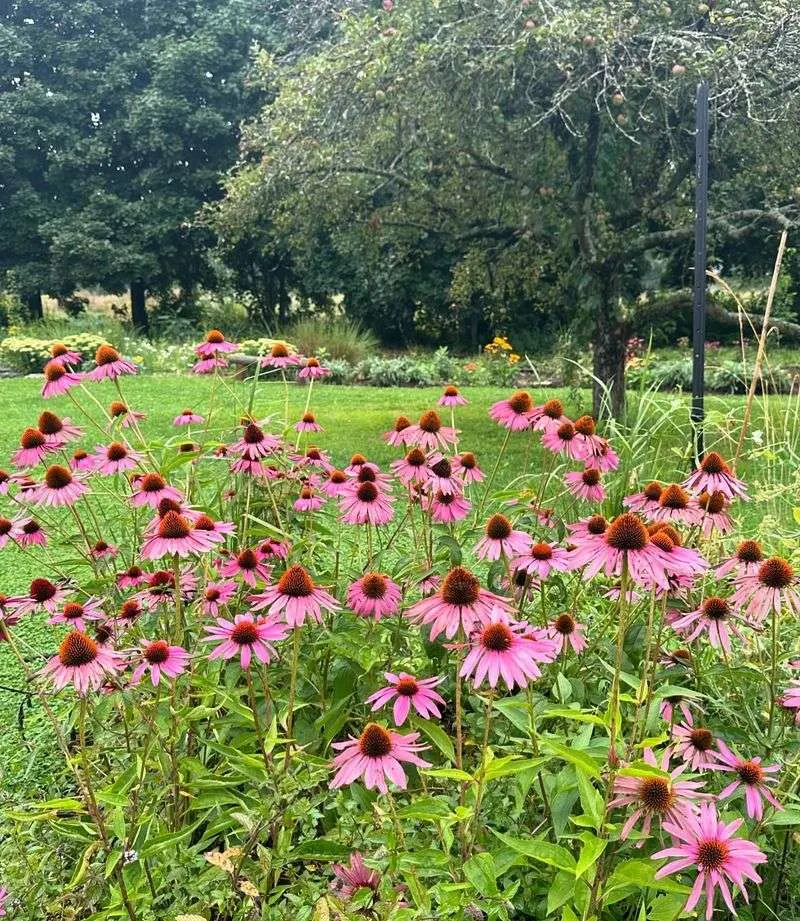
Purple Coneflower doesn’t just exist—it thrives, its daisy-like blooms with spiky centers creating a visual symphony. These flowers are a magnet for butterflies and finches, drawn to the nectar and seeds.
In herbal lore, the coneflower is a healer, prized for its medicinal properties. In your garden, it stands as a testament to resilience and beauty, its vibrant petals a siren call to all winged creatures. It’s not just a plant, but a gathering place for nature’s delicate dance.
Red Osier Dogwood
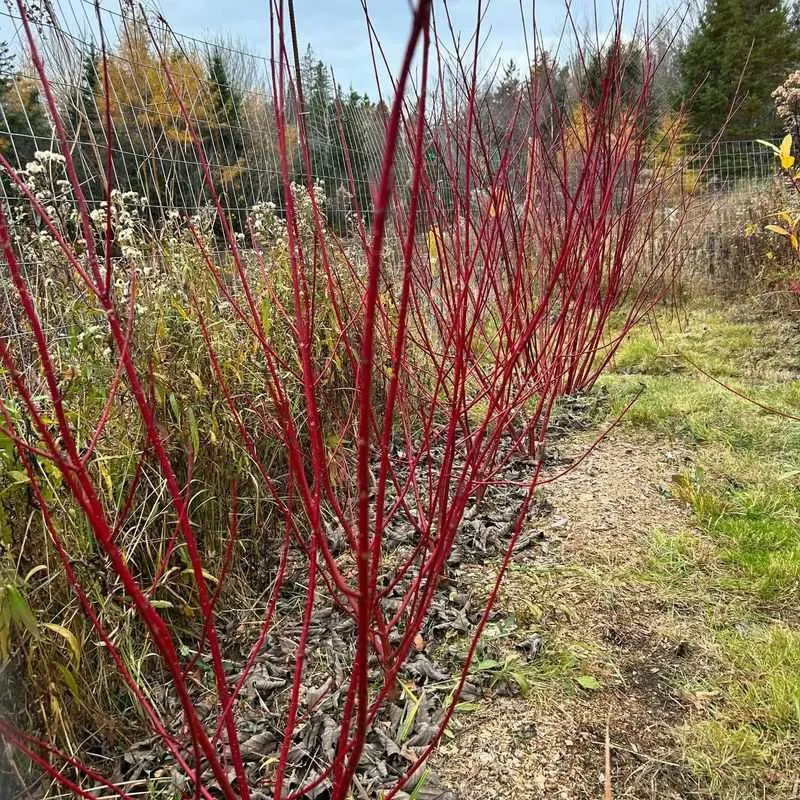
Red Osier Dogwood doesn’t just survive winter—it defies it with fiery red stems that stand out against the snow. Its white berries are a beacon for birds in the bleakest months, offering sustenance when little else is available.
This plant is more than just a survivor; it’s a symbol of resilience and beauty. In Native American culture, it’s used in basket weaving, a testament to its strength and flexibility. In your garden, it stands firm, a vibrant splash of color and life, drawing avian visitors with its bounty.
Butterfly Weed
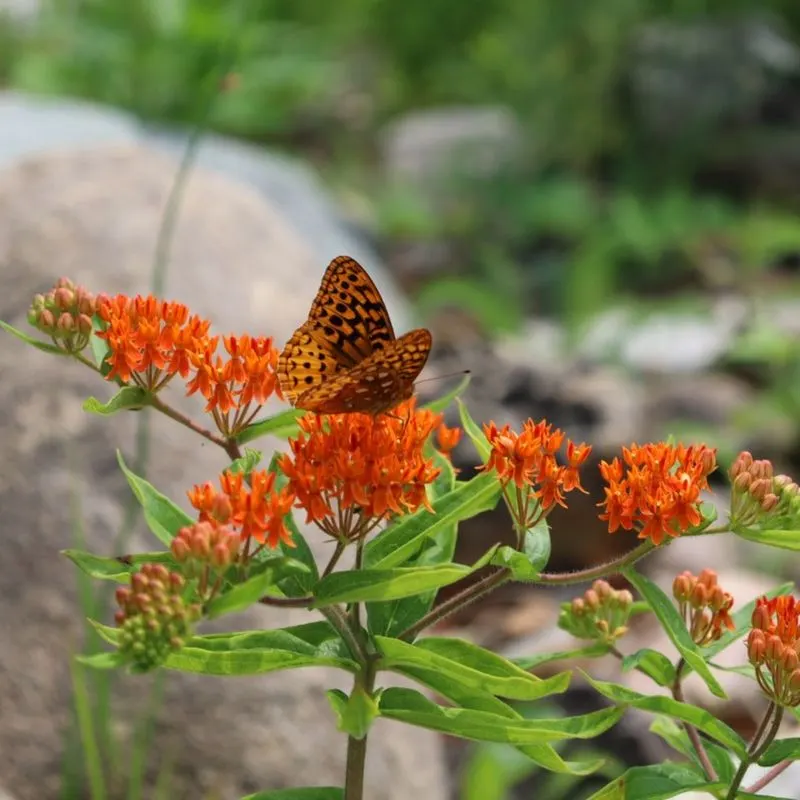
Butterfly Weed doesn’t just attract butterflies—it summons them with flaming orange blossoms that light up fields and gardens. These flowers are a lifeline for Monarchs, who rely on them for sustenance and breeding.
Beyond butterflies, birds feast on the seeds, drawn to the life and energy these plants exude. It’s not just a plant; it’s a beacon of biodiversity, ensuring your garden hums with life. In folklore, it symbolizes transformation and hope, making it a must-have for any bird-friendly space.
Common Yarrow
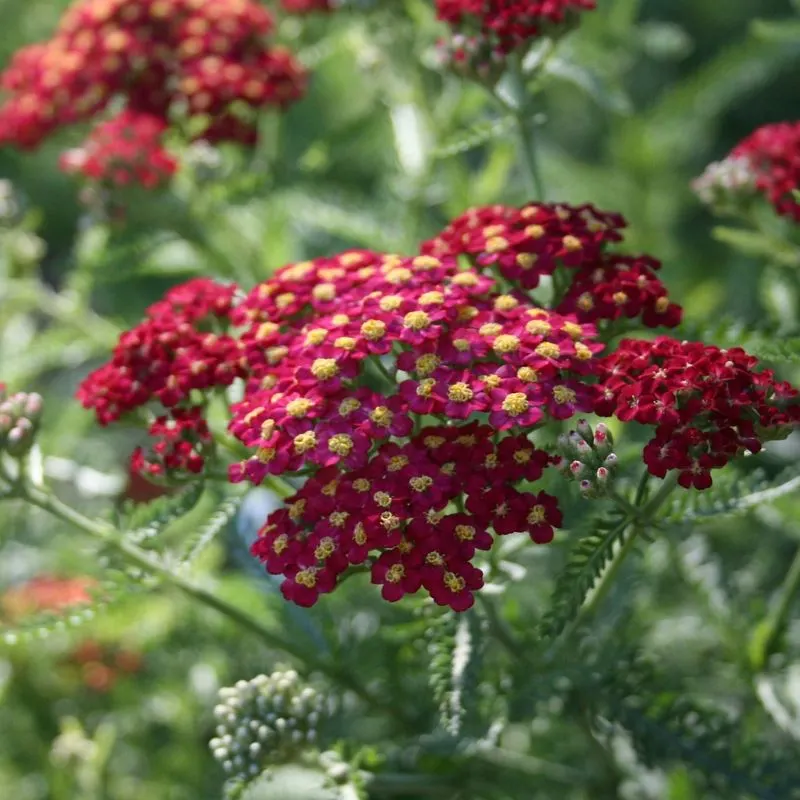
Common Yarrow doesn’t just grow—it conquers, with feathery leaves and clusters of tiny white flowers. Birds and insects alike are drawn to this plant, a hub of activity in any backyard.
Steeped in herbal tradition, yarrow is a warrior plant, known for its healing properties. In your garden, it’s a gathering spot, a place where life happens in vibrant spurts. It’s not just a plant; it’s a living, breathing part of the ecosystem, ensuring your yard is alive with chirps and flutters.
Coral Honeysuckle
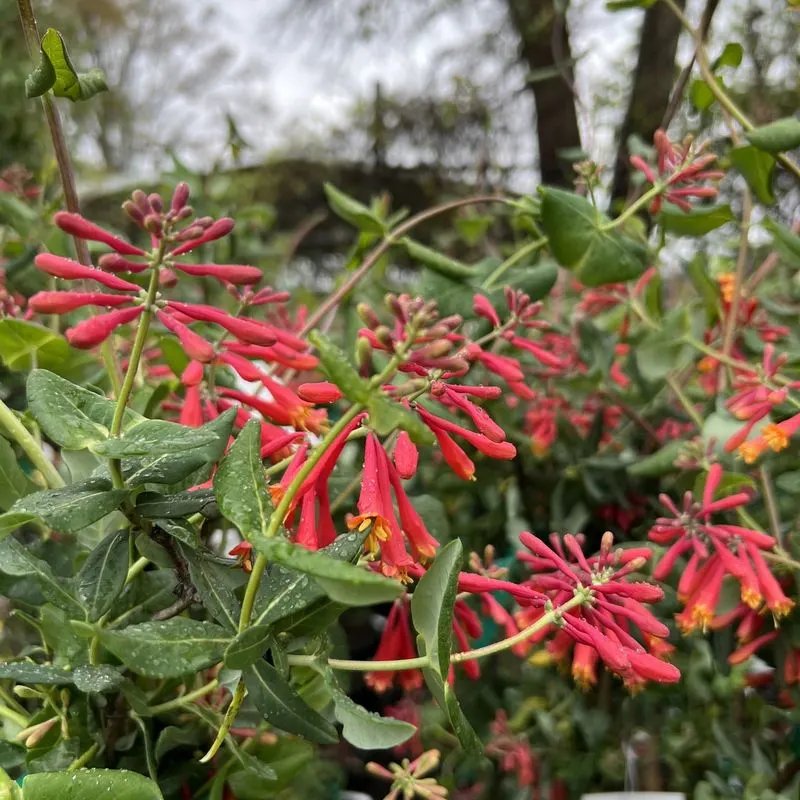
Coral Honeysuckle doesn’t just climb—it ascends, spiraling upwards with vibrant red blooms that capture sunlight and attention. Hummingbirds can’t resist its nectar-rich flowers, visiting them again and again.
This vine isn’t just decoration; it’s a lifeline for pollinators, providing shelter and sustenance. Its lush growth and vivid hues make it a dynamic addition to any garden. In folklore, it symbolizes devotion and bonds, ensuring your garden is a haven for birds and beauty alike.
Wild Columbine
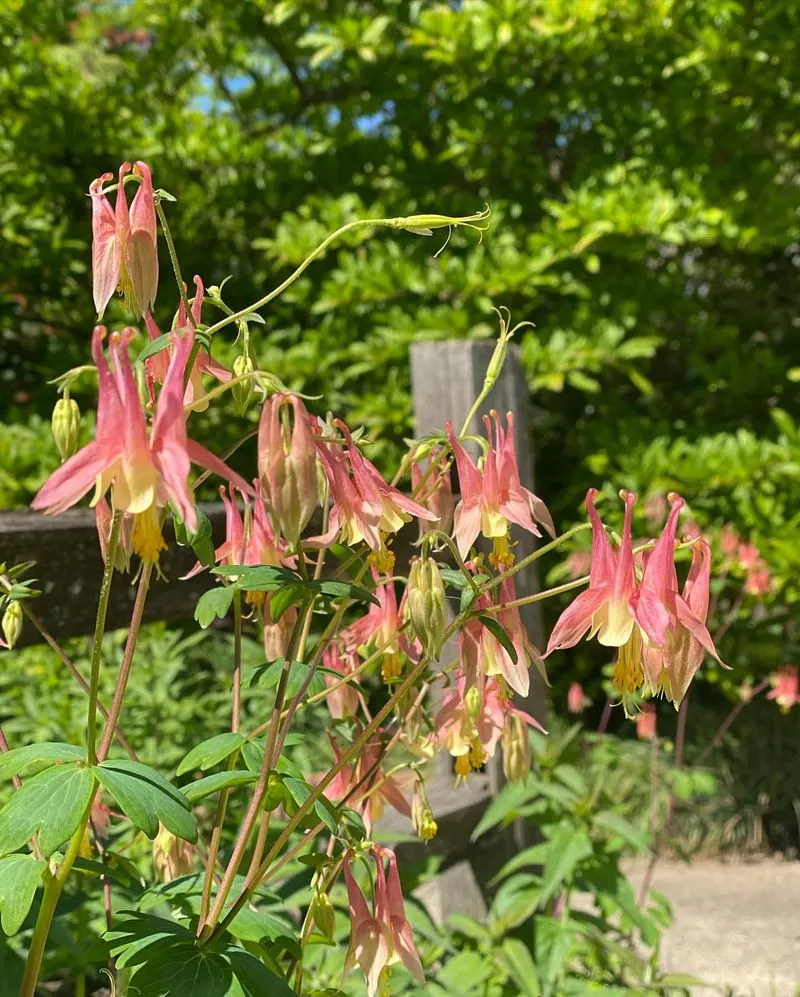
Wild Columbine doesn’t just grow—it enchants, with red and yellow flowers that nod gracefully in the breeze. These blooms are a favorite of hummingbirds, drawn to the sweet nectar within.
Beyond its beauty, Wild Columbine plays a crucial role in the ecosystem, supporting pollinators and adding splashes of color to the landscape. In folklore, it’s a symbol of courage and wisdom, ensuring your garden is not just alive, but thriving with life and energy.
American Beautyberry
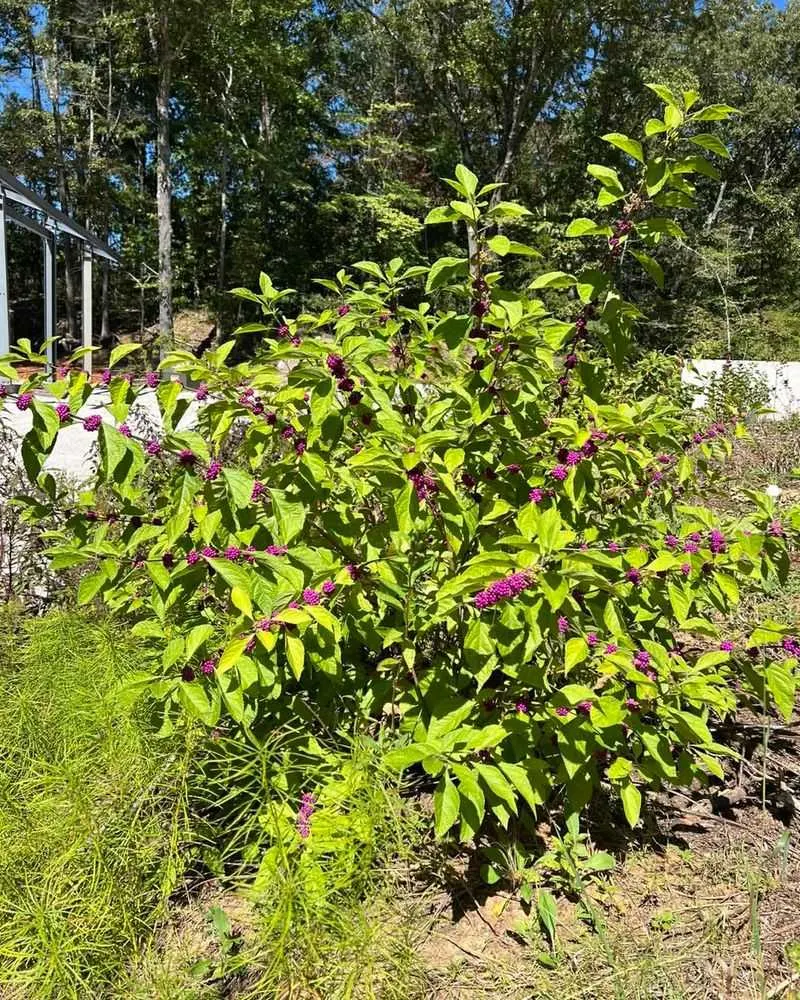
American Beautyberry doesn’t just grow—it dazzles, its branches laden with clusters of vibrant purple berries. These berries are a magnet for birds, a feast that promises nourishment and delight.
The beautyberry bush isn’t just a visual treat; it’s a vital part of the ecosystem, providing food and shelter. In folklore, it’s a symbol of abundance and prosperity, ensuring your garden is alive with chirps and flutters. It stands as a testament to nature’s bounty, drawing avian visitors with its vibrant allure.
Bee Balm
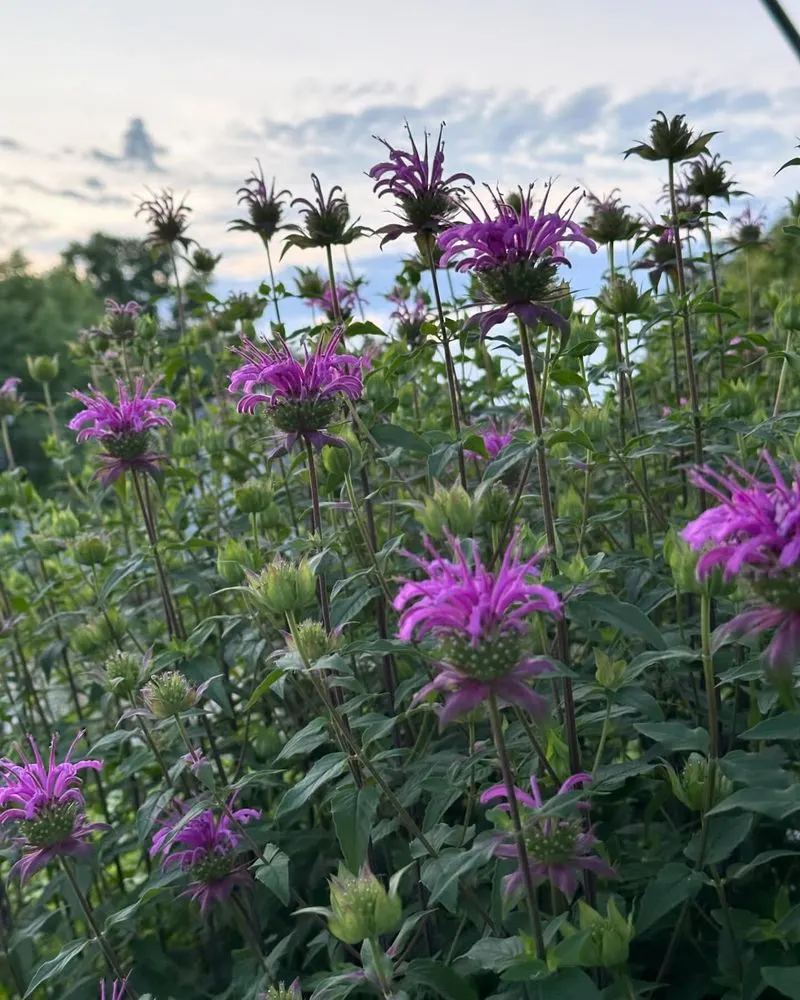
Bee Balm doesn’t just bloom—it erupts in shades of red and purple, each flower a beacon for bees and hummingbirds. Its spicy scent fills the air, a heady invitation to all pollinators.
This plant is more than just a pretty face; it’s a medicinal marvel, used in teas and remedies. In your garden, it stands as a symbol of life and vitality, ensuring your space buzzes with energy and avian delights. Bee Balm is not just a plant; it’s a celebration of nature’s wonders.
Joe-Pye Weed
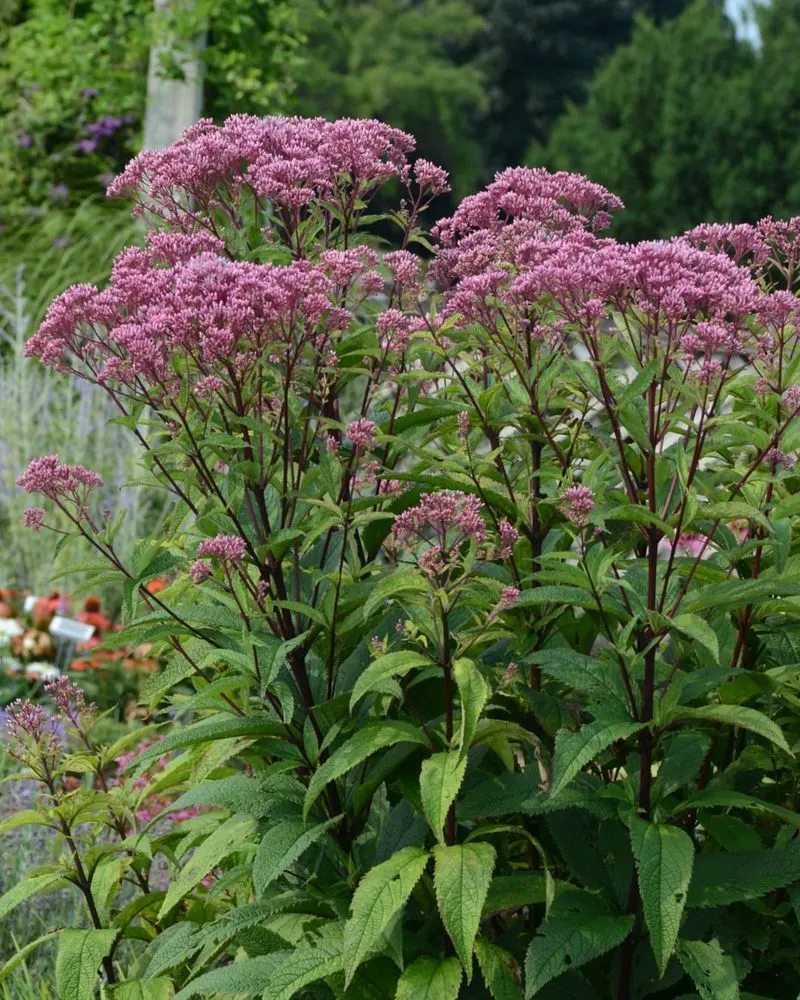
Joe-Pye Weed doesn’t just stand—it towers, its pink clusters rising like beacons in the summer landscape. It draws in butterflies and birds, who feast on its nectar and seeds.
Once used by Native Americans for healing, this plant is a testament to nature’s generosity. In your garden, it stands as a pillar of life, ensuring your space is alive with color and movement. It’s not just a plant; it’s a living tribute to the wild, attracting avian visitors with its grace and bounty.
Winterberry
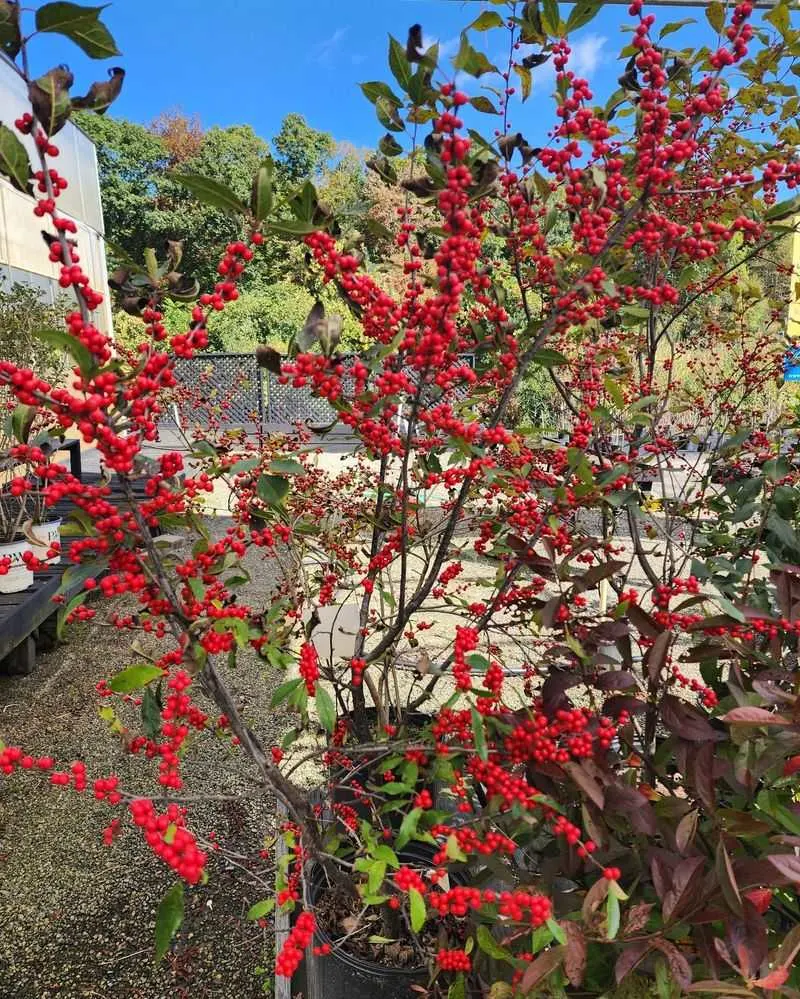
Winterberry doesn’t just exist—it thrives in the cold, its bright red berries a beacon in the bleak winter landscape. These berries are a lifeline for birds, offering food when little else is available.
This plant is more than just decorative; it’s a symbol of endurance and beauty. In your garden, it stands as a vibrant splash of color, drawing avian visitors with its bounty. Winterberry is not just a plant; it’s a promise of life in the coldest months, ensuring your garden is alive with chirps and flutters.
New England Aster
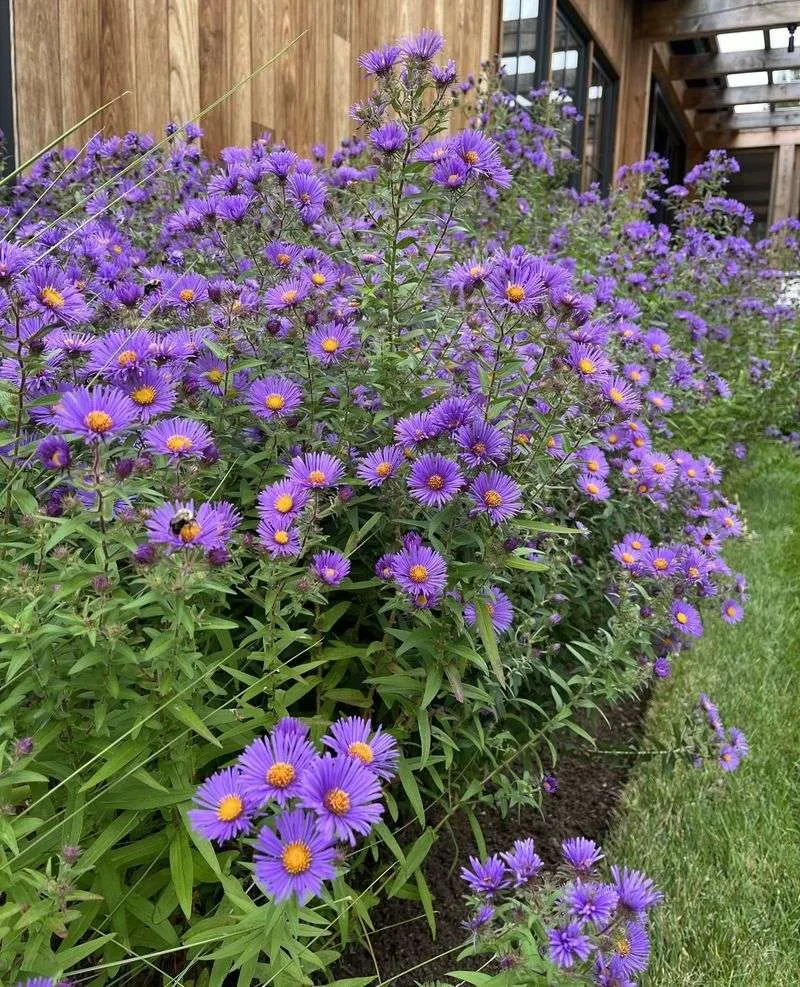
New England Aster doesn’t just grow—it flourishes, its vibrant purple and pink blooms a testament to the changing seasons. Birds and butterflies flock to it, drawn by the nectar and seeds.
In folklore, the aster is a symbol of love and patience, ensuring your garden is not just alive but thriving with life and energy. It’s not just a plant; it’s a vibrant piece of nature’s tapestry, attracting avian visitors with its colorful allure.
Spicebush
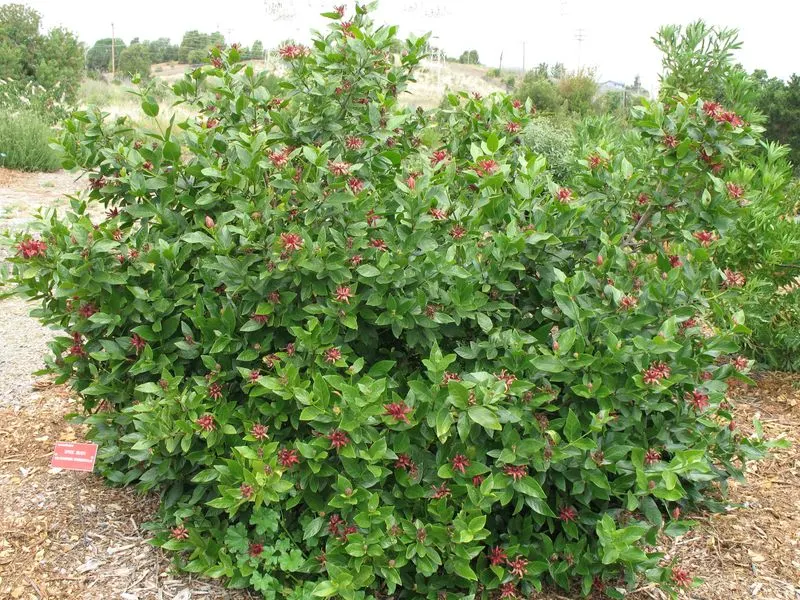
Spicebush doesn’t just grow—it captivates, with bright yellow blooms that transform into vibrant red berries. These berries are a feast for birds, attracting them with their spicy aroma and taste.
This plant is more than just a food source; it’s a symbol of the changing seasons, ensuring your garden is alive with chirps and flutters. In folklore, it represents prosperity and protection, making it a vital part of any bird-friendly space.
Eastern Hemlock
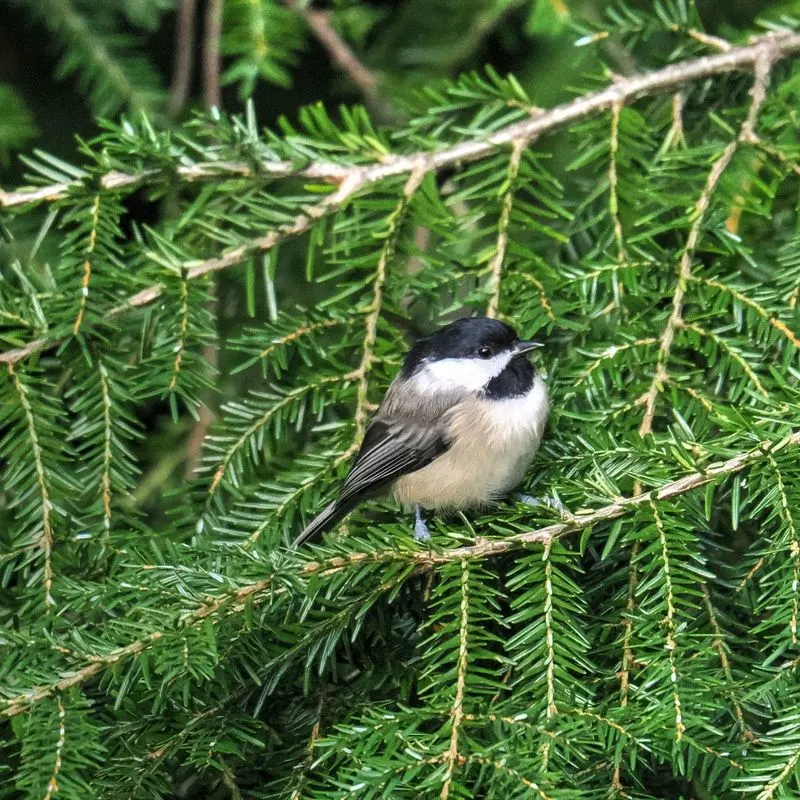
Eastern Hemlock doesn’t just stand—it shelters, its dense green foliage providing refuge for birds in all seasons. Its branches are a sanctuary, a place where birds can nest and thrive.
More than just a tree, it’s a symbol of resilience and longevity. In your garden, it stands as a guardian, ensuring your space is alive with chirps and flutters. The Eastern Hemlock is not just a plant; it’s a timeless beacon of life and shelter, attracting avian visitors with its ancient allure.
Indigo Bush
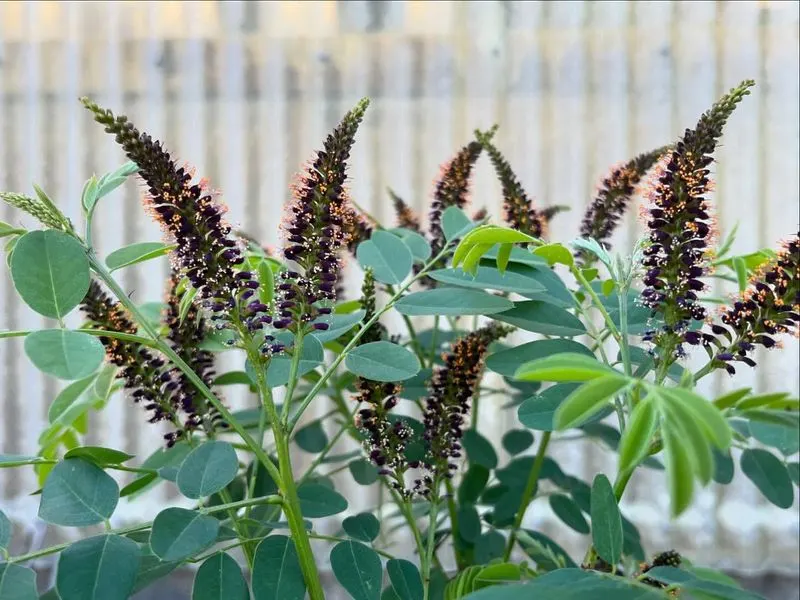
Indigo Bush doesn’t just grow—it dazzles, its clusters of blue flowers a striking contrast against the arid landscape. Birds and insects alike are drawn to its vibrant hues and the promise of nectar.
In folklore, the indigo bush is a symbol of wisdom and transformation, ensuring your garden is not just alive but thriving with life and energy. It’s not just a plant; it’s a vibrant piece of nature’s tapestry, attracting avian visitors with its colorful allure.
Wild Strawberry
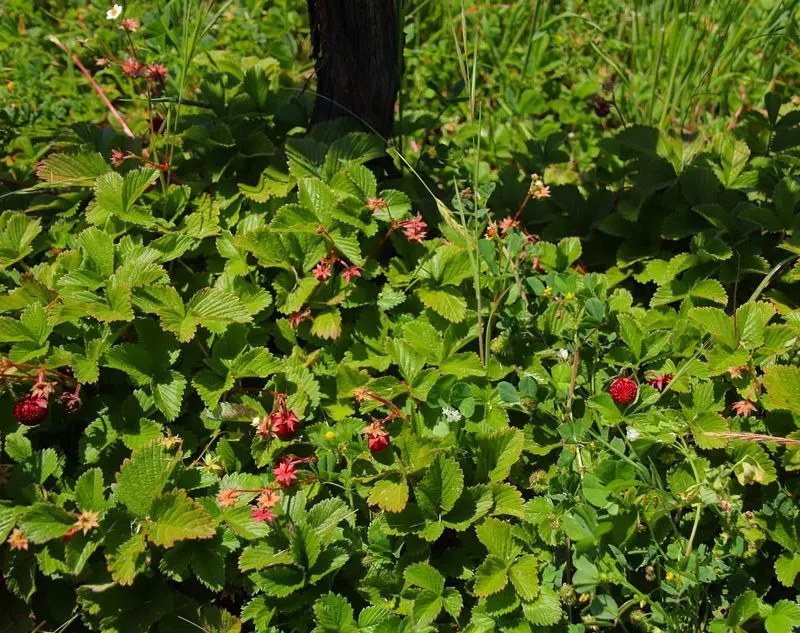
Wild Strawberry doesn’t just spread—it invites, its small red berries a delightful surprise for birds and small animals. These berries are a sweet treat, drawing avian visitors with their juicy allure.
More than just a snack, the wild strawberry is a symbol of abundance and simplicity, ensuring your garden is alive with chirps and flutters. In folklore, it’s a symbol of love and purity, making it a vital part of any bird-friendly space. It’s not just a plant; it’s a living invitation to nature’s wonders.

